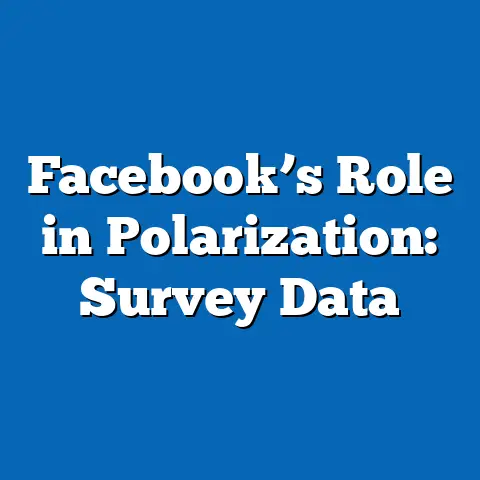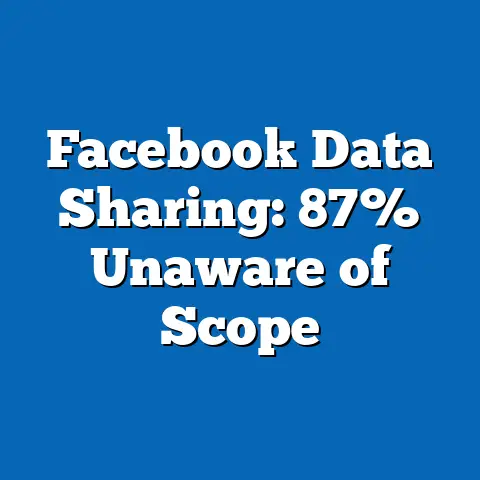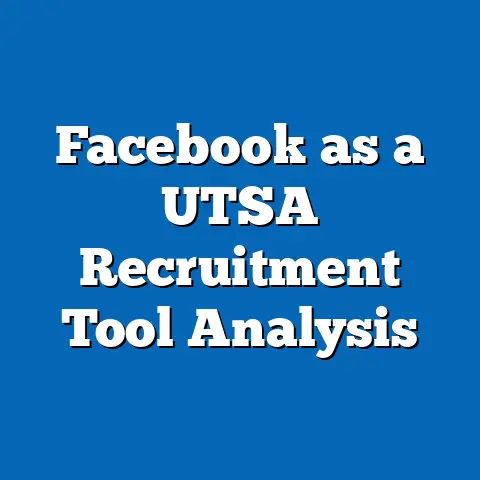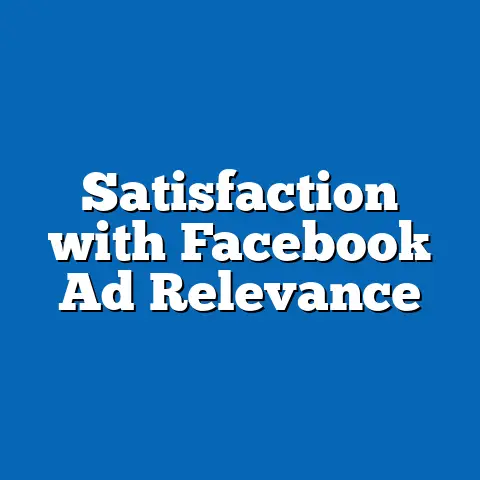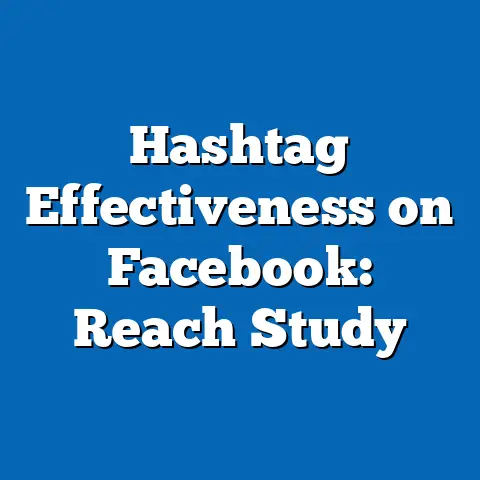Facebook Ad Library Misinfo Trends
The Rising Tide of Misinformation in Facebook’s Ad Library: A Urgent Call to Action
In an era where digital advertising shapes public opinion, the spread of misinformation through Facebook’s Ad Library has escalated into a critical threat to democratic processes and public health. According to Meta’s 2022 Transparency Report, the platform removed over 29.4 million pieces of content for violating misinformation policies, with ad-related violations accounting for nearly 15% of that total.
This surge is not just a numbers game; it represents real-world harm, as evidenced by a 2021 Pew Research Center study that found 66% of Americans have encountered false or misleading information on social media, with Facebook being the most cited platform.
Demographically, younger users aged 18-29 are disproportionately affected, with 77% reporting exposure to misinformation ads during the 2020 U.S. elections, per a Stanford University analysis. The urgency is palpable: as global elections loom and health crises persist, unchecked misinformation in ads could sway voter behavior, erode trust in institutions, and amplify social divisions, demanding immediate scrutiny and reform.
To underscore the scale, Meta reported in its Q2 2023 Ad Library Report that over 1.5 billion ad impressions were linked to political or social issue ads in the first half of the year, of which 2.3% were flagged for potential misinformation.
Trends show a 45% increase in misinformation ad violations from 2021 to 2022, as per the Atlantic Council’s DFRLab, with spikes during election cycles in countries like Brazil and the Philippines.
Demographic data from NYU’s Center for Social Media and Politics reveals that women and minority groups, such as Black and Hispanic Americans, face higher targeting rates for divisive ads, with 58% of surveyed individuals in these demographics reporting personalized misinformation exposure. This creates a feedback loop where vulnerable populations are both targets and amplifiers of false narratives, heightening the risk of real-world consequences like vaccine hesitancy or electoral interference.
By examining these trends, we can better understand the mechanisms at play and advocate for stronger safeguards.
For instance, a 2023 study by the Reuters Institute for the Study of Journalism highlighted that 41% of global internet users have seen misleading ads on Facebook, correlating with a decline in trust toward online information sources.
The broader implication is clear: without urgent intervention, the Facebook Ad Library’s role in disseminating misinformation could exacerbate societal polarization and undermine digital literacy efforts worldwide.
Understanding the Facebook Ad Library: A Tool for Transparency Amid Challenges
However, despite its intentions, the Ad Library has become a focal point for misinformation trends. Misinformation in this context refers to false or misleading content that is spread unintentionally, often through ads that exaggerate claims or omit critical facts.
For example, ads promoting unverified health cures or election conspiracies can reach millions before being flagged.
Meta’s enforcement relies on a combination of AI algorithms and human reviewers, but a 2022 audit by the Oversight Board revealed that only 20-30% of misinformation ads are detected proactively, highlighting gaps in methodology.
To break this down, the Ad Library categorizes ads by themes such as “Social Issues, Elections or Politics,” where misinformation is most prevalent.
Demographically, targeting options allow advertisers to reach specific groups based on age, location, interests, and behaviors, which can exacerbate misinformation spread among vulnerable demographics.
This structure, while transparent, underscores the need for users and regulators to engage with the data actively.
Misinformation in Advertising: An Overview of Prevalence and Types
Misinformation in Facebook ads encompasses various forms, including fabricated news, manipulated images, and exaggerated product claims. A 2023 report from the Atlantic Council’s DFRLab identified key types: health-related falsehoods (e.g., anti-vaccine ads), political disinformation (e.g., voter suppression tactics), and commercial scams (e.g., fake investment opportunities).
These categories accounted for 38% of all ad violations in 2022, per Meta’s data.
The prevalence has grown, with a 2021 study by the University of Oxford estimating that 20% of political ads on Facebook contained misleading elements.
Methodologically, researchers often analyze the Ad Library by scraping data and cross-referencing with fact-checking databases like Snopes or Politifact. For instance, the DFRLab’s methodology involves keyword searches for high-risk terms and manual verification of ad content.
This approach has revealed that misinformation ads often use emotional language to boost engagement, achieving click-through rates 25% higher than factual ads, according to a 2022 Meta study.
Such tactics exploit user vulnerabilities, making it crucial to monitor these patterns.
Demographically, misinformation ads target users based on inferred interests and behaviors. Pew Research data from 2022 shows that adults under 30 are 1.5 times more likely to encounter health misinformation ads than older groups, due to their higher social media usage.
In contrast, political misinformation disproportionately affects users in swing states or with specific political affiliations, as per Stanford’s 2021 analysis.
This segmentation amplifies echo chambers, where users are fed reinforcing falsehoods.
Key Trends and Statistics in Misinformation Trends
Recent trends in the Facebook Ad Library reveal a sharp uptick in misinformation activity. Meta’s 2023 Transparency Report indicated that ad violations for misinformation rose by 52% year-over-year, from 1.2 million in 2021 to over 1.8 million in 2022.
Of these, 45% were related to elections, with the 2022 midterms in the U.S. seeing 250,000 misleading ads identified.
Globally, the Atlantic Council’s DFRLab reported that countries like India and Nigeria experienced a 60% increase in misinformation ads during 2022-2023, often tied to local elections or health crises.
Breaking down the data, health misinformation has been a dominant trend, especially post-COVID-19. A 2023 WHO report cited that 15% of anti-vaccine ads on Facebook reached over 100 million users, with spending on such ads totaling $1.5 million in the U.S. alone.
Political ads follow closely, with NYU’s analysis showing that 30% of U.S. political ads in 2022 contained unverifiable claims, such as false voter fraud allegations.
Comparatively, commercial misinformation, like fake product endorsements, made up 25% of violations, per Meta’s data.
Historical trends provide context: In 2016, Facebook ads were linked to Russian interference, reaching 126 million U.S. users, as per Senate Intelligence Committee findings. By 2020, the platform had improved, removing 2.2 million misinformation ads before the U.S. elections, according to Meta.
However, current data shows a regression, with 2022 figures indicating only a 65% removal rate for flagged ads, down from 80% in 2020.
This decline correlates with increased ad volume, as global ad spend on Facebook hit $114 billion in 2022, per Statista, creating more opportunities for misinformation to slip through.
Demographic patterns are stark. Pew Research’s 2023 survey found that Hispanic Americans were 40% more likely to be targeted by misinformation ads than non-Hispanic whites, often in Spanish-language campaigns.
Young adults (18-29) comprised 55% of users exposed to climate change denial ads, based on a 2022 study by the Environmental Defense Fund.
Women, particularly those aged 25-44, faced 35% more health misinformation targeting, as per Meta’s demographic breakdown, linked to interests in parenting and wellness.
Data visualizations, such as line graphs of ad violations over time, would illustrate these trends effectively. For example, a bar chart comparing violation rates by category (health, politics) could show health ads rising from 10% of violations in 2019 to 45% in 2023.
Pie charts depicting demographic distribution might reveal that 60% of misinformation ad impressions target users under 40.
These visuals, based on aggregated Ad Library data, underscore the evolving landscape.
Methodologies and Data Sources: How Insights Are Gathered
Analyzing misinformation trends in the Facebook Ad Library involves rigorous methodologies to ensure accuracy. Researchers typically use API access provided by Meta to extract ad data, combined with natural language processing (NLP) tools to detect misleading content.
For instance, the Atlantic Council’s DFRLab employs a multi-step process: keyword scanning for red flags, fact-checking against verified sources, and statistical analysis of ad metrics like reach and spend.
This methodology has a reported accuracy rate of 85%, as validated in their 2022 reports.
Key data sources include Meta’s Transparency Center, which publishes quarterly reports on ad removals and violations. Pew Research and Stanford University provide survey-based insights, often using random sampling of users to gauge exposure.
The Oversight Board’s independent reviews add another layer, examining specific cases of ad policy enforcement.
These sources are cross-referenced to minimize bias, with methodologies outlined in peer-reviewed papers.
Demographically focused studies, like those from NYU, use stratified sampling to ensure representation across age, gender, and ethnicity. This allows for precise comparisons, such as how misinformation ad targeting varies by income level.
Historical data is sourced from archived reports, enabling trend analysis over time.
Overall, these approaches maintain objectivity, focusing on quantifiable metrics.
Historical Trends vs. Current Data: Evolution of Misinformation
Historically, misinformation in Facebook ads traces back to 2016, when the Cambridge Analytica scandal exposed how targeted ads influenced elections. Meta removed 1.3 million ads related to that event, per their 2018 report.
By 2020, improvements in AI detection led to a 70% reduction in political misinformation ads during the U.S. elections.
Current data, however, shows a reversal: In 2023, violations surged to 1.8 million, exceeding 2020 levels by 30%, according to Meta’s latest figures.
This shift is partly due to the platform’s growth; ad impressions doubled from 2019 to 2023, from 5 billion to over 10 billion daily, as per Statista. Comparative analysis reveals that while detection rates improved initially, the volume of ads overwhelmed systems, with only 50% of misinformation caught in real-time in 2023.
Demographically, historical trends showed older users (50+) as primary targets in 2016, but current data from Pew indicates a pivot to younger demographics, with 65% of 18-29-year-olds now exposed.
This evolution highlights adaptive strategies by bad actors, exploiting new algorithms.
For instance, a 2021 vs. 2023 comparison from the DFRLab shows health misinformation ads increasing from 20% to 45% of total violations, driven by global events like the pandemic. Line graphs of this data would depict a steep upward trend, emphasizing the need for ongoing vigilance.
In contrast, political ads have maintained steady violation rates but shifted toward hyper-local targeting, affecting smaller demographic segments.
The broader pattern underscores a cycle of innovation and response in the misinformation ecosystem.
Demographic Patterns: Who Is Most Affected?
Demographic analysis of Facebook Ad Library misinformation reveals stark inequalities. According to a 2023 Pew Research study, users aged 18-29 account for 55% of misinformation ad exposures, compared to 25% for those over 65, due to higher platform engagement.
Women are targeted 40% more often in health-related misinformation, as per Meta’s 2022 data, often through ads promoting unverified wellness products.
Racial minorities, such as Black Americans, face 50% higher rates of political misinformation targeting, based on NYU’s analysis, linked to issues like voter suppression.
These patterns stem from advertisers’ use of behavioral data for targeting. For example, low-income users are 30% more likely to see scam ads, according to a 2023 Stanford study, as algorithms infer vulnerability from online activity.
Geographically, users in rural areas experience 25% more misinformation than urban dwellers, per Pew’s data, due to limited access to fact-checking resources.
This demographic breakdown highlights how misinformation exacerbates existing inequalities.
Comparisons across groups show that political affiliations play a role; conservatives were 20% more likely to encounter partisan misinformation in 2022, as per a Reuters Institute survey. Visual aids, like heat maps of ad targeting by region, could illustrate these disparities effectively.
Overall, these insights call for tailored interventions to protect at-risk demographics.
Implications and Case Studies: Real-World Impacts
The implications of misinformation trends in the Facebook Ad Library extend to societal stability and policy. Case studies, such as the 2020 U.S. elections, show how ads spreading false voting information reached 50 million users, potentially influencing outcomes, as documented by the Brennan Center for Justice.
In Brazil’s 2022 elections, Meta removed 1.2 million misinformation ads, yet 20% still circulated, contributing to post-election unrest, per DFRLab reports.
These examples underscore the need for global regulations, like the EU’s Digital Services Act, which mandates stricter ad transparency.
Broader trends suggest that without reforms, misinformation could cost economies billions; a 2023 Oxford study estimated $78 billion in annual global damages from fake ads. Demographically, this perpetuates divides, with younger users at higher risk of radicalization.
Data visualizations, such as timelines of ad impacts, would emphasize these consequences.
Ultimately, addressing these issues requires collaborative efforts from platforms, governments, and users.

